
❖❖❖
IN THIS ISSUE
14 THINGS THAT WILL NEVER GET OLD
ABOUT ITALIAN TRATTORIAS
By John Mariani
NEW YORK CORNER
LOVE AND PIZZA:
THE WORLD OF NICOLA SANTINI TODAY
By John Mariani
NOTES FROM THE WINE CELLAR
GETTING TOP ECHELON JOBS IN WINE INDUSTRY
❖❖❖
ABOUT ITALIAN TRATTORIAS
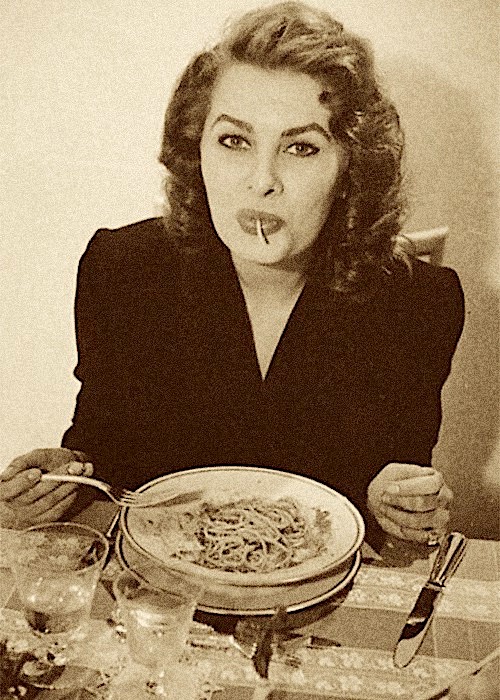
A few weeks ago I wrote about “Ten
Things That Will Never Get Old About French
Bistros,” and was prompted by readers to write
the same about bistros’ Italian cousin—the
trattoria. First of all, a trattoria is not a
ristorante,
which is (generally speaking) somewhat higher
end, larger and refined, with, of course, higher
prices. The word trattoria comes from the French
traiteur as
originally applied to medieval cook shops.
Trattorias are small eateries with small menus
and big flavors. And they don’t go in for
anything trendy.
Here are fourteen things about them to
love.
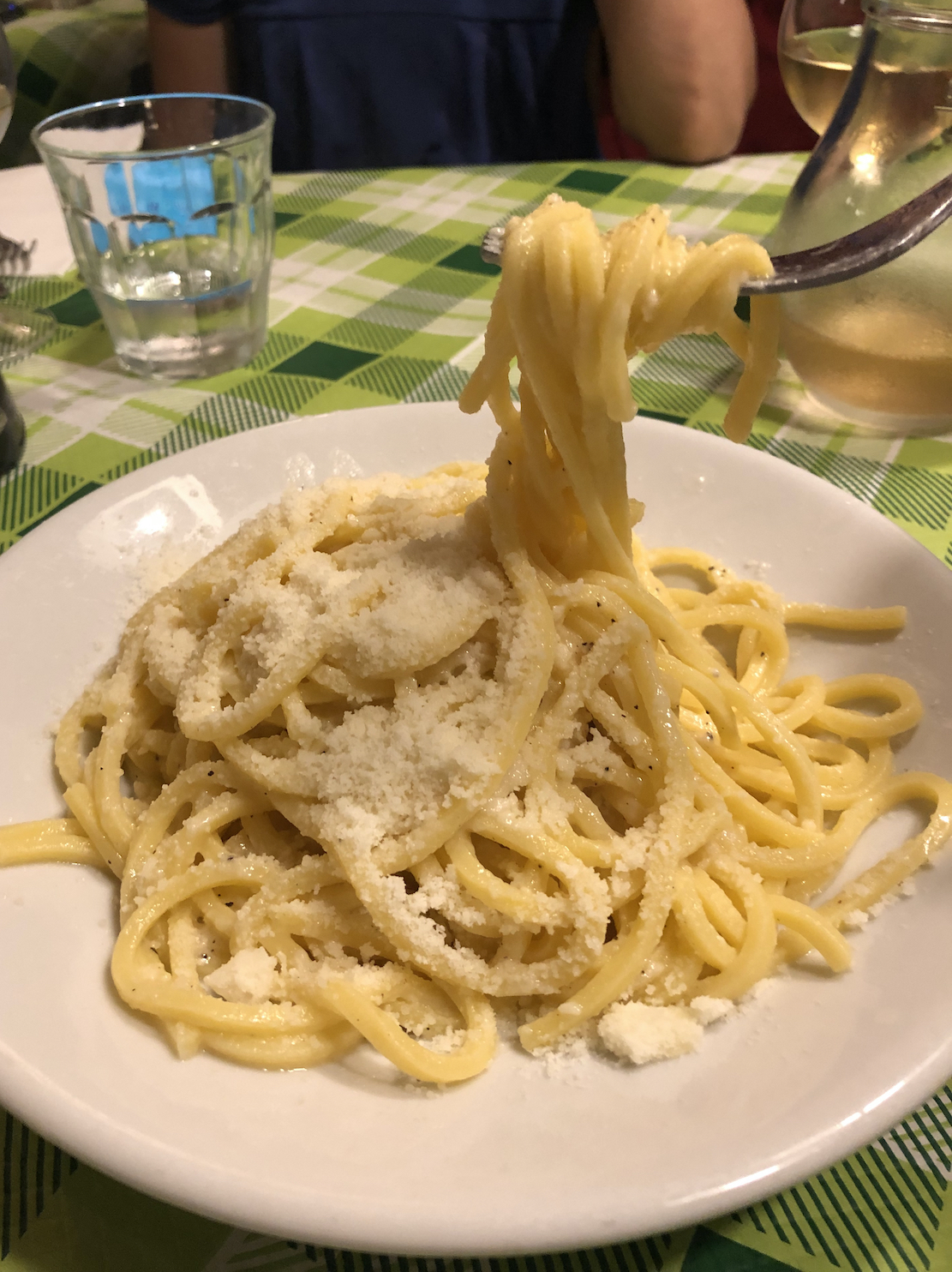 ●
Trattorias are largely family owned and operated,
often generationally, with the sons and daughters,
even grand kids, working. This assures consistency
and a familial attitude towards their guests.
●
Trattorias are largely family owned and operated,
often generationally, with the sons and daughters,
even grand kids, working. This assures consistency
and a familial attitude towards their guests.
● Trattorias focus on regional
specialties, so in Rome you’ll invariably find the
menu will include Roman dishes like bucatini
all’arrabiata, cacio e pepe (right), alla
carbonara, coda alla
vaccinara, abbacchio (below) and
others. And if the owner comes from outside of
Rome, say Sicily or Abruzzo, he or she will
feature the specialties of those native regions.
● Trattorias cook
seasonally and, except for tomatoes (grown year
round in the South), rarely will they make dishes
with out-of-season ingredients. Hence, this spring
you’ll find fragrant basil, mushrooms, baby lamb
and dishes made “alla
primavera” (“of the springtime”). In autumn
come the white truffles and game dishes.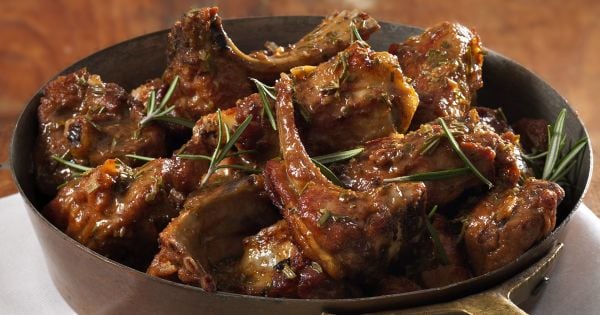
● Except for seasonality, trattorias
don’t change their basic menu very much beyond
offering one or two specials for an evening
because a good ingredient was found that morning
in the market. So, if you enjoyed that plate of
linguine with clam sauce ten years ago at a
favorite trattoria, it will likely still be on the
menu, and just as you remembered it.
● There will always be bread on the
table, usually already there before you sit down.
There might also be breadsticks called grissini,
or perhaps focaccia.
While it’s okay to dip your bread in olive oil,
Italians do not use butter on their bread, so
don’t ask for it.
 ●
The most varied part of the menu, often arrayed on
a buffet table, will be the antipasti, which will
contain everything from red peppers and marinated
zucchini to fresh mozzarella and salami. Indeed,
this is the principal way to eat your veggies in a
trattoria, where side dishes of anything but
spinach and potatoes are rare.
●
The most varied part of the menu, often arrayed on
a buffet table, will be the antipasti, which will
contain everything from red peppers and marinated
zucchini to fresh mozzarella and salami. Indeed,
this is the principal way to eat your veggies in a
trattoria, where side dishes of anything but
spinach and potatoes are rare.
● While the antipasti may well be the
savoriest items on the menu, every trattoria
prides itself on its pastas as the glory of
Italian cooking. The simplicity of the pasta
sauces and the perfect al dente cooking of the
pasta itself are paramount and allow the chef to
compete in a big market by personalizing favorite
dishes.
● Main courses are almost always very
simple and unadorned. Fish will be grilled and
graced with olive oil and lemon; meats and poultry
will be grilled and served the same way; stews
will usually be a daily special and be more
complex but never gussied up on the plate. On the
side may be polenta or potatoes, never, as in
old-fashioned Italian-American restaurants, a
portion of overcooked macaroni.
● No matter how casual a trattoria
may be, it is most likely to have tablecloths,
often checkered, even in a pizzeria. It is not an
indication of formality but of hygiene and
graciousness. (And pizza is rarely served in a
trattoria, although that's changing.)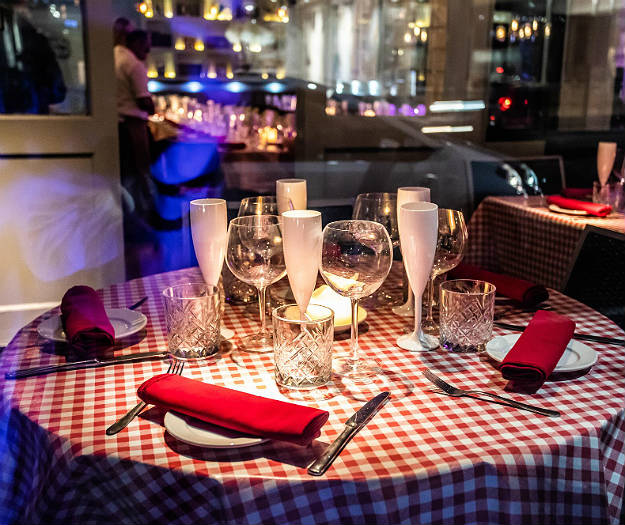
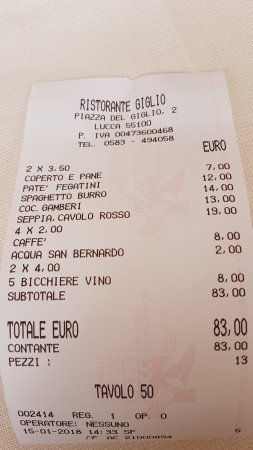 ●
While there’s no dearth of tourists eating at
highly recommended trattorias, they are most
frequented by locals who eat there with friends
and family and order dishes they have grown to
love over the years, which means the owners
wouldn’t dare change a successful, popular recipe.
You, therefore, should not ask the chef to “go
easy on the garlic” or ask for your meat to be
cooked well done.
●
While there’s no dearth of tourists eating at
highly recommended trattorias, they are most
frequented by locals who eat there with friends
and family and order dishes they have grown to
love over the years, which means the owners
wouldn’t dare change a successful, popular recipe.
You, therefore, should not ask the chef to “go
easy on the garlic” or ask for your meat to be
cooked well done.
● Service, as noted, is familial.
Staff in trattorias love their guests, and, given
the restricted menus, food can seem rushed out,
but that’s because it’s served when it is ready
and hot. Lukewarm pasta is considered a betrayal
of national pride, so if the pasta plate is set
before you, start eating immediately and do not
wait for the rest of your party of six to get
theirs.
●You do not have
to tip in a trattoria (or a ristorante).
In Italy the service charge is built into the
price of the dish, so tipping on top of that is a
nice but wholly unexpected gesture. If you do,
then a few euros would be appreciated. There may
be a minor coperto
(cover charge) on the bill for bread and
tablecloth.
● Desserts are an afterthought in
trattorias. There might be a lemon tart or
chocolate-hazelnut cake, but the gelato, sorbetto
and biscotti are probably purchased up the street.
Trattorias do not hire pastry chefs.
● Wine lists at trattorias were once
banalities and the house wines (vini della
casa) poor. These days any decent trattoria
is likely to have a more interesting list, often
with local wines featured, and, since the overall
quality of bulk wines in Italy has improved so
much, the house wine is going to go quite well
with the cook’s food.
❖❖❖
LOVE AND PIZZA
Cover Art By Galina Dargery
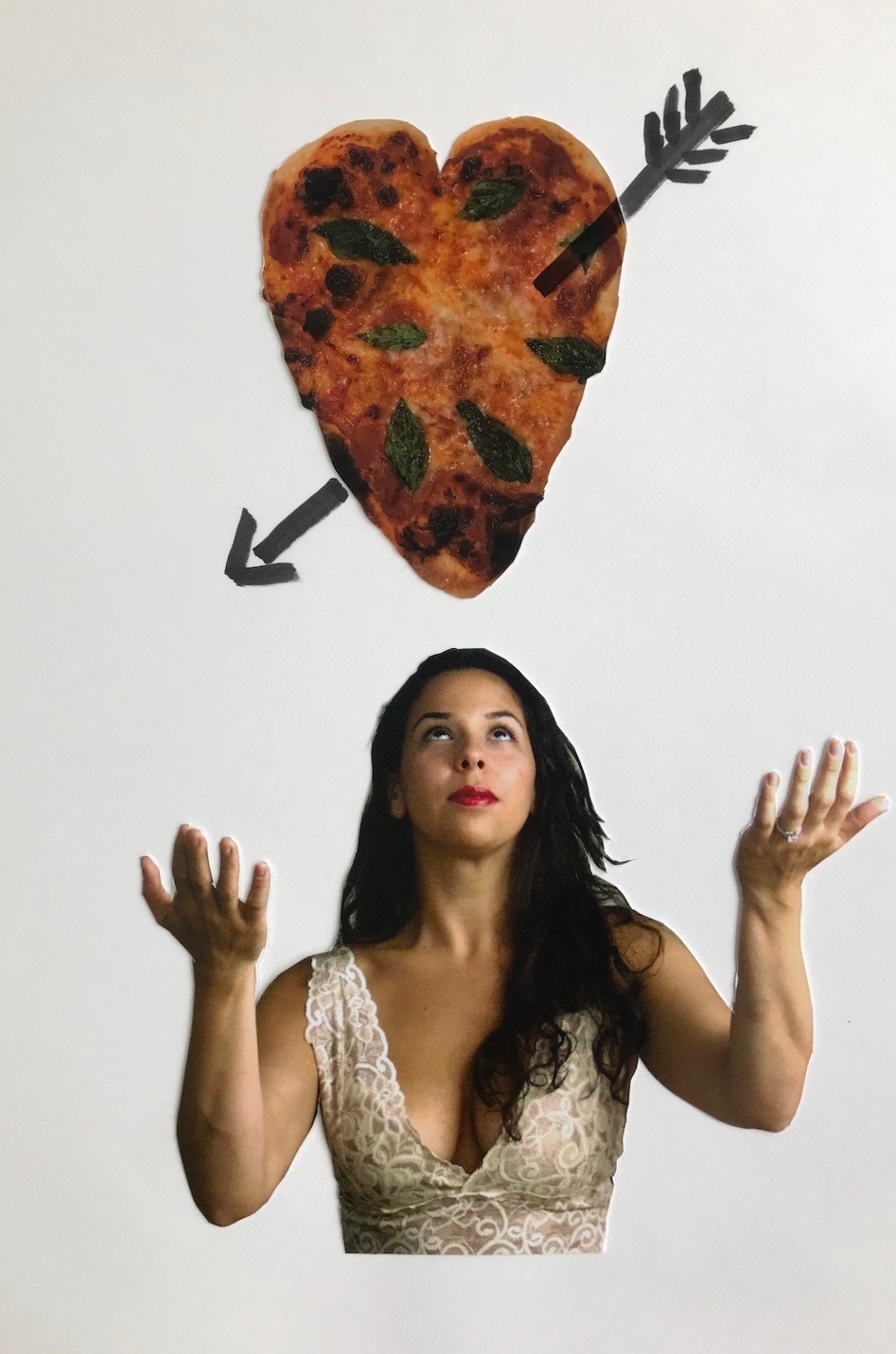
THE WORLD OF NICOLA
SANTINI TODAY
Some readers may find it interesting to
visit the places, sites, and restaurants that are
part of Nicola Santini’s story in Love and
Pizza.
The good news is that almost all of them
are still open and easy to visit. Indeed,
in most cases, as with the Milan museums, the
condition of the artwork and the ease of
visitation have been increased exponentially from
Nicola’s time, and the improvement of sites like
Yankee Stadium, Grand Central Terminal and the
Bronx Zoo has been equally admirable. Even
Nicola’s neighborhood of Belmont is now far more
appealing and vibrant than it was in 1985.
Here then is a guide to the sites,
restaurants, food, and people in Love and
Pizza for those whose interest extends
beyond the covers of the book.
THE BRONX
 Christopher
Postlewaite
Christopher
Postlewaite
As described in the novel,
the Bronx in the mid-1980s was quite divided
between deterioration and reclamation. The more
affluent sections like Riverdale, the
solidly middleclass Country Club and Pelham Bay
regions and other neighborhoods in the north Bronx
held steady, but crime and drugs took their ravaging
toll on the South. The crack wars of the 1980s
turned neighborhoods into war zones that festered
until the mid-1990s, when many of those involved in
those gang wars had been killed off. But by the turn
of the 21st century most parts of the Bronx were
well on their way to a renaissance of multi-ethnic
neighborhoods, culture, and family stability.
Nicola’s Belmont neighborhood (above)
had been protected from the blight and crime by the
continuing presence of its Italian-American
families, and, although the mob element in Belmont
had diminished, it still staved off some aspects of
urban decay in the 1990s and helped maintained a
protective shield against the encroachment of the
worst occurring elsewhere.
Belmont in particular grew in stability and
cleanliness, so that its restaurants and food
markets began to receive coverage from the New York
media, which came to regard the area as a far more
authentic “Little Italy” than the tourist trap
streets south of Greenwich Village, whose real
estate had, by the 1990s, been bought up by
developers from overlapping Chinatown.
Since the middle of that decade Belmont and
its main artery, Arthur Avenue, have flourished as a
destination for tourists, who come as much to shop
there as to eat there.
Daily, buses from Manhattan, New Jersey,
Connecticut, and elsewhere stop along Arthur Avenue
to be immersed for an hour or two in a thriving
Italian-American neighborhood—even if the area has
in recent years been largely inhabited by Albanians,
Slovenians, and Croatians, some of whom run the
Italian-American restaurants there. Not a few
tourists come looking for evidence of mobsters, as
depicted in the 1993 movie “A Bronx Tale,” which
took place in the troubled 1960s. They are
always disappointed.
The safety of the neighborhood is pretty much
guaranteed; even in the bad times, Belmont was one
of the safest precincts in New York, and now, along
flanking Fordham Road, an increasing number of
Latino families have stabilized that stretch of road
all the way to the Hudson River.
You can happily visit the Gothic-style Fordham
University
(above), where one of Nicola’s photo
shoots for Willi
takes place, and for aficionados of hip hop, you can
still drive past 1520 Sedgwick Avenue to see where
it all began.
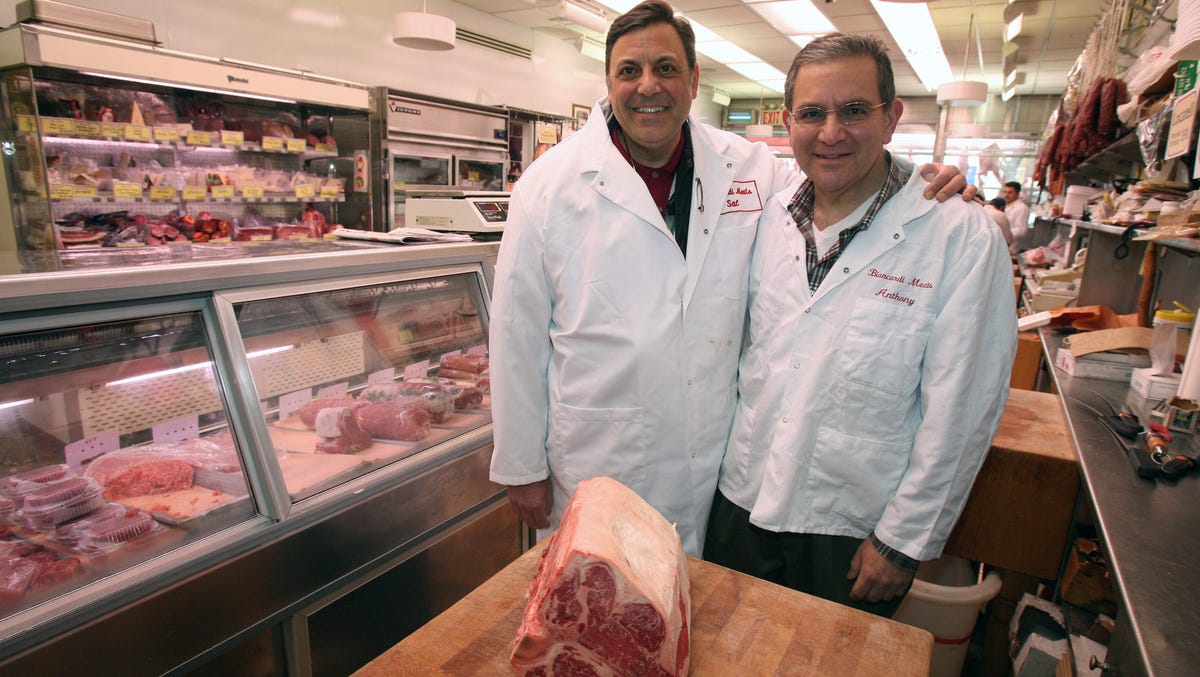 Along
Arthur Avenue you can slurp raw shellfish from a
outdoor counter at Randazzo’s Fish Market and
buy baby lamb at Biancardi’s butcher shop (left).
Around the corner they still cut your order of fresh
pasta at Borgatti’s and you can see the original
wood-fire baking oven at Terranova. Only
recently did the Mt. Carmel Candy Store
close; it was where Nicola would sip Bronx egg
creams.
Along
Arthur Avenue you can slurp raw shellfish from a
outdoor counter at Randazzo’s Fish Market and
buy baby lamb at Biancardi’s butcher shop (left).
Around the corner they still cut your order of fresh
pasta at Borgatti’s and you can see the original
wood-fire baking oven at Terranova. Only
recently did the Mt. Carmel Candy Store
close; it was where Nicola would sip Bronx egg
creams.
The restaurant that most resembles Bella
Napoli (which becomes Alla Teresa in the story) is Mario’s
(below), set on Arthur Avenue since 1919 and
still going strong. The only difference between the
fictional and real restaurant was that while Mario’s
always had great pizzas, the rest of its
Italian-American food is far better than Bella
Napoli’s was. 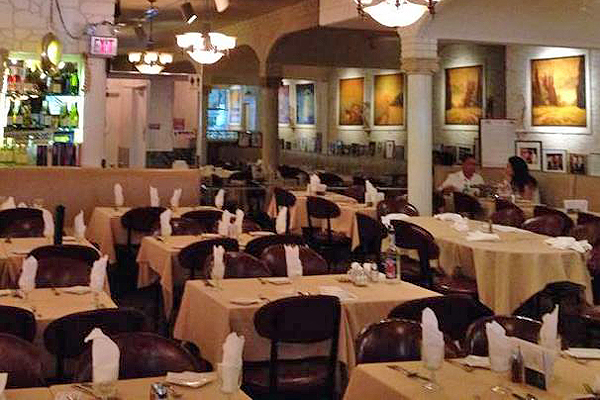
Never have the Bronx Botanical Gardens
been more spectacular—always packed on weekends—and
the Bronx Zoo,
New York’s largest, with its stunning Art
Deco gates, is now one of the nation’s most modern
zoological parks and animal research centers.
Yankee Stadium, which had opened in
1923, was badly renovated in 1974, when Nicola knew
it, then closed in 2008 while a wholly new one was
built across the street, incorporating much of the
architectural design of the beloved original,
including the copper frieze and latticework trim.
The new stadium opened in 2009, at the cost of $1.9
billion.
MANHATTAN
Columbia
University has grown greatly in size since
Nicola’s time there, with many modern new buildings
and a continuing expansion into four large blocks of
Harlem. Hamilton Hall, where Nicola meets
Prof. Saint John Smith, was named after Alexander
Hamilton, and it has been refurbished in recent
years to restore its McKim, Mead, and White
neo-classical grandeur. The campus is easily
accessible during the day, and the surrounding area
of Morningside Heights—once extremely dangerous—is
now well patrolled.
 Grand
Central Terminal (left) underwent a
monumental twelve-year restoration as of 1998, not
least its glorious astrological ceiling that in
Nicola’s day was darkened by grime, cigarette smoke
and discoloration.
Entire walkways and hallways were re-opened
and skylights discovered after having been blocked
out during World War II, when New York feared German
bombers might fly over the city. The big Bulova
clock and the huge Kodak photographic billboard that
had been in the Terminal since the 1960s were
removed during the restoration. Today the
glistening, beautifully lighted Terminal is host to
a bewildering array of retail stores, food markets
and restaurants, and has more than 21 million
visitors each year.
Grand
Central Terminal (left) underwent a
monumental twelve-year restoration as of 1998, not
least its glorious astrological ceiling that in
Nicola’s day was darkened by grime, cigarette smoke
and discoloration.
Entire walkways and hallways were re-opened
and skylights discovered after having been blocked
out during World War II, when New York feared German
bombers might fly over the city. The big Bulova
clock and the huge Kodak photographic billboard that
had been in the Terminal since the 1960s were
removed during the restoration. Today the
glistening, beautifully lighted Terminal is host to
a bewildering array of retail stores, food markets
and restaurants, and has more than 21 million
visitors each year.
The Metropolitan Museum of Art has
since 1985 expanded into Central Park and added new
wings and exhibition space not available to Nicola. 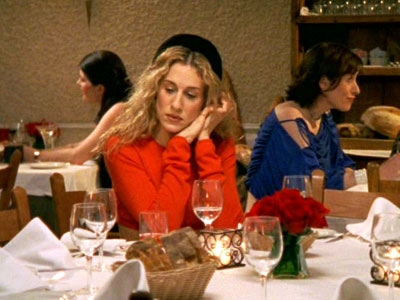 In
addition, tens of thousands of new art works have
been bought or been donated to the institution.
Fortunately, the stunning Neapolitan Baroque Crèche
Nicola visits with Marco is still mounted each year
and is for many New Yorkers a requisite annual
visitation during the Christmas holidays.
In
addition, tens of thousands of new art works have
been bought or been donated to the institution.
Fortunately, the stunning Neapolitan Baroque Crèche
Nicola visits with Marco is still mounted each year
and is for many New Yorkers a requisite annual
visitation during the Christmas holidays.
Downtown in Greenwich Village, the restaurant
Da Silvano has closed but Il Cantinori is still
open and is where they filmed an episode of "Sex
& the City" (right).
MILAN
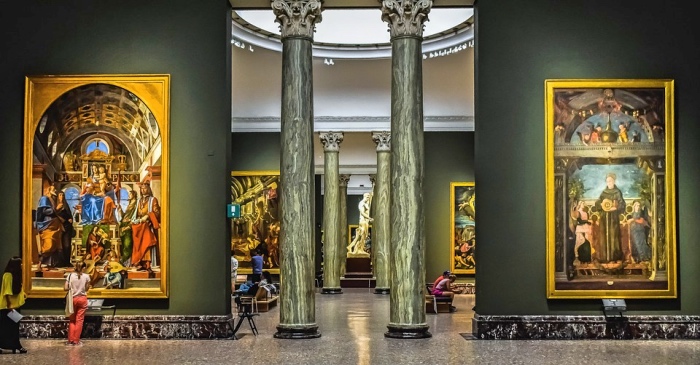 While the historic
center of Milan would be as familiar to Nicola and
her friends today as it was when they went to school
there, the city’s outskirts have been blighted, as
in every Italian city, with ugly apartment and
industrial buildings.
But the inner core of the city has never
looked better, been cleaner or richer than it is
today.
While the historic
center of Milan would be as familiar to Nicola and
her friends today as it was when they went to school
there, the city’s outskirts have been blighted, as
in every Italian city, with ugly apartment and
industrial buildings.
But the inner core of the city has never
looked better, been cleaner or richer than it is
today.
In wonderful contrast to the way Milan’s
museums looked in 1985—poorly lighted, with
masterpieces haphazardly hung and left unrestored
for centuries—the Brera (left) and
the Ambrosiana are now as superbly renovated
as any in Europe, and careful restoration efforts
(which the visitor can actually watch) are ongoing,
so that the works of all the great masters now gleam
as if they’d been painted in the recent past. The
“Lamentation of Christ” by Mantegna, “The Holy
Conversation” by Piero della Francesca, the
theatrical “Finding of the Body of St. Mark” by
Tintoretto, and the “The Supper at Emmaus” by
Caravaggio are all now in pristine condition.
Da Vinci’s “Last Supper” in the
refectory of Santa Maria delle Grazie, whose
restoration work Nicola commented on, is now
complete, though, sadly, the results are
disappointing. For however careful and fastidious
the restorers were, the condition of the painting
was almost unredeemable by the time they started
work on it. It
is true that you can now see details in the mural
that had long been hidden from view, but the
patchwork nature of the restoration—inch by inch—was
only able to repair so much. If you are
visiting, make reservations as far in advance as you
can (there are websites that can help with tickets)
because only a very limited number of people are
allowed into the room at set hours during the day.
On my recent visit to Milan I went in search
of the Museo del Cinema within the Public
Gardens that Nicola visits with Giancarlo, but it
was closed and its contents removed several miles
from Milan’s center, to Viale Fulvio Testi.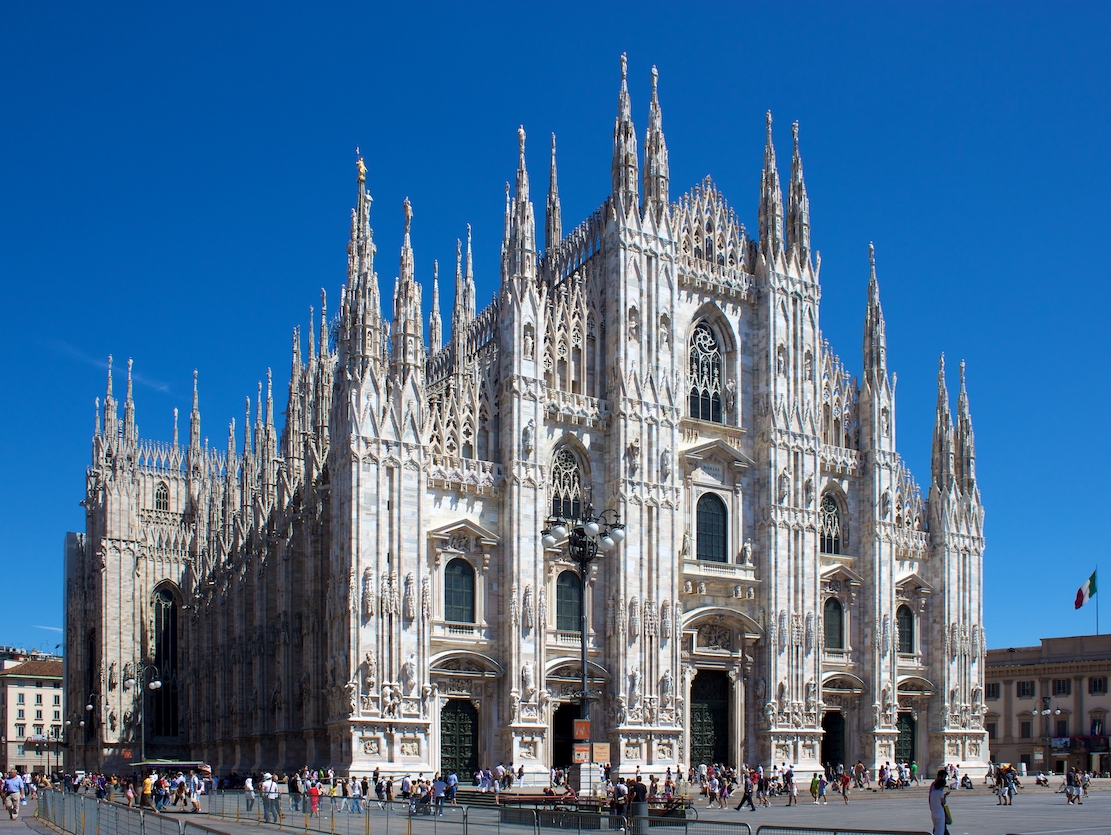
Of course, the vast Galleria Vittorio
Emmanuele II still stands beside the great
Gothic Duomo cathedral (right), and
both have been resplendently restored, so that the
church’s marble gleams as white as it originally
was, and the Galleria’s walls and archways glow with
colors once faded under centuries of neglect. The
Galleria has also attracted a far higher class of
fashion boutiques to its space; the cafes are still
full of people drinking cappuccino, and the
restaurant Savini, where Giancarlo takes Nicola for
dinner, is still open, mostly serving people outside
in good weather. It is still very expensive, the
menu very classic.
If Nicola and her
friends returned to Milan today, they would find all
their favorite restaurants open: Le Langhe is still
popular and Paper Moon looks pretty much
the way it did in 1985 (below), run by the
same family. The pizza is as thin, crisp and
delicious as ever. Just a few yards away on the same
block is Bagutta, which 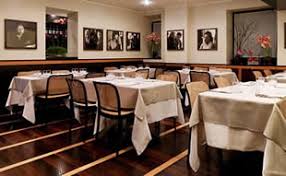 went into decline after 2010 and
closed last year.
went into decline after 2010 and
closed last year.
More
than ever, however, Milan has become a fashion
capital, and the well-lighted, beautifully designed
boutiques are spread throughout the same streets
like Via Montenapoleone (below) and Via
della Spiga that Nicola strode when the city’s
reputation for fashion was building fast. As the
fashion center has spread out, many designers now
rent multiple store units, which change occupants
often. For even if the stores don’t ever seem to
have many customers, the brand names need to be
manifest in
that area.
The
Gran Sforza Hotel, where Catherine takes her friends
for cocktails, is fictitious, though suggested by The
Four Seasons Hotel that opened in a 15th
century convent a few years later.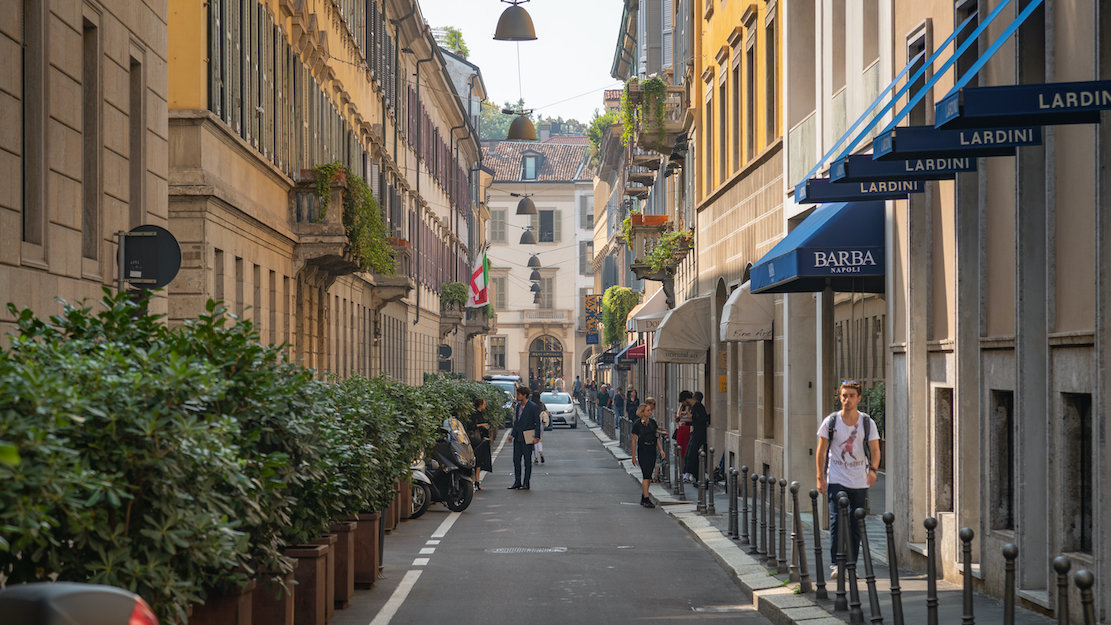
The Principe di Savoia Hotel, where
Giancarlo and Nicola spend their first night
together, is now more deluxe, more beautiful, and
better maintained and serviced than ever before,
with one of Milan’s finest deluxe ristoranti,
called Acanto.
Incidentally, in Turin, Giancarlo takes our
heroine to Ristorante del Cambio, which, as
described in the novel, had by the mid-1980s lost
most of its prior luster and was badly in need of
refurbishment.
Fortunately, that came in 2014 with a new
owner, and the restaurant won a Michelin star that
same year.
In Paris, Taillevant, where Catherine
meets Giancarlo for dinner, still reigns as one of
the city’s finest classic restaurants.
CAPRI and
NAPLES
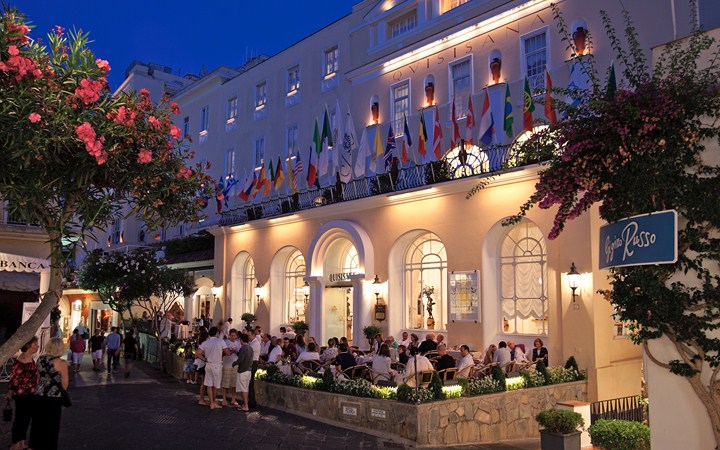 Capri in season
remains the overrun destination it has been for
decades, with ferries arriving by the hour from
Naples and Sorrento, disgorging tourists who spend
the day then get back on the same ferries, laden
with shopping bags and bottles of limoncello. The
well-heeled still stay at the well-renovated La
Grand Hotel Quisisana (left). The little
trattoria where Nicola meets Marco is fictitious, as
is the pizzeria in Naples’ Spaccanapoli.
Capri in season
remains the overrun destination it has been for
decades, with ferries arriving by the hour from
Naples and Sorrento, disgorging tourists who spend
the day then get back on the same ferries, laden
with shopping bags and bottles of limoncello. The
well-heeled still stay at the well-renovated La
Grand Hotel Quisisana (left). The little
trattoria where Nicola meets Marco is fictitious, as
is the pizzeria in Naples’ Spaccanapoli.
In Naples the Galleria Nazionale di
Capodimonte is still a repository for Italian
and classical art.
GETTING TOP ECHELON JOBS IN WINE INDUSTRY
By John Mariani

This Month, wine industry
veteran Terry Wheatley, 67, became the
first woman in history to take a major,
multi-hundred-million dollar U.S. wine producer
public, helping Vintage Wine Estates to launch a
$690M IPO after entering into a merger agreement
with London-based Bespoke Capital Acquisition
Corp. Upon closing in May,
the
combined company will create a business with an
enterprise value of $700
million to be named Vintage Wine Estates Inc. This will expand VWE’s current
portfolio of over 50 wine and spirits brands and
double its production capacity to 15 million
cases/year with an expanded production capacity,
high speed bottling line investment and new
warehouse/distribution centers.
While women still struggle to reach the upper
echelons of the industry (a 2020 study by the Wonder
Women of Wine and The
Wine Nerd found
nearly two out of three women think hiring in the
wine industry is biased, with the same number
estimating it will take 10+ years to reach
equality in wine), Wheatley has been recognized as “Innovator of the Year”
by Wine Enthusiast for her strategies to
create, develop and market. Wheatley leads sales
and marketing for the three Vintage business
channels: wholesale, direct-to-consumer and
business-to-business as well as Team Innovation,
charged with analyzing consumer tastes and trends
and responding with first-to-market wine products.
She is also Chairwoman of the Board for
CannaCraft, California’s second-largest cannabis
company.
Wheatley was hired by Vintage Wine Estates after
she had such success with her own wine sales and
marketing company, Canopy Management. Recently she
appointed Jessica Kogan as Chief Digital Office to
oversee all DTC channels and e-grocery omnichannel
strategy for Vintage.
In an interview by e-mail, I asked Wheatley what
changes have occurred and what the future will be
in marketing wines worldwide.
Q: At
a time when the wine world is in such flux and
there is a glut in the market, what does an IPO
do for VWE?
The
wine business is recovering from the disruptions
of the global pandemic. In our business,
on-premise and tasting-room sales were essentially
shut down for a year. VWE is a diversified company
operating in three well-balanced business channels
that I like to call our three-legged stool:
traditional wholesale, direct-to-consumer and
business-to-business. Our direct-to-consumer
segment has multiple channels that make up the
business unit.
While the tasting rooms were closed and our
wine club sales softened, our Cameron Hughes
brand, which is digitally native, our e-commerce,
our tele-sales business and our relationship with
QVC was able to fill the pandemic gap. Some in our
industry who have been focused on restaurants and
tasting room visitors are still feeling the
effects of that loss in revenue. The capital from
an IPO gives us the jet fuel to take advantage of
acquisition opportunities as a result.
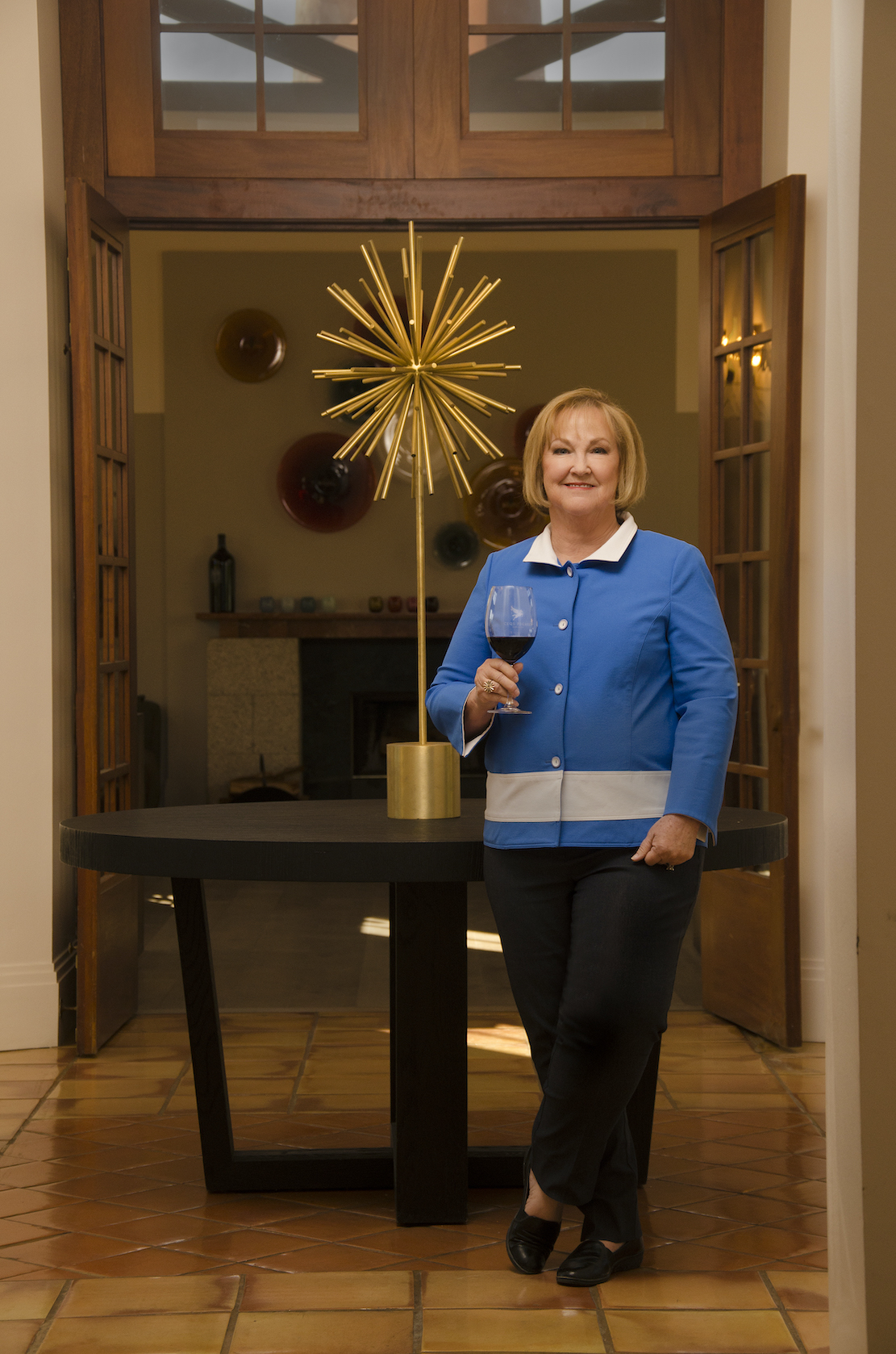 Q:
What will you acquire?
Q:
What will you acquire?
A
recent Silicon Valley Bank poll indicated out of
the 10,000 wineries in the U.S., a little over
half have interest in selling. Some may be owners
who are ready to retire and don’t have a next
generation to take over; others may be smaller
wineries impacted by the pandemic ready to move
on. Queries come in daily. Pat Roney, as the CEO
and official “acquisitor” of VWE, has over a dozen
proposals on his desk right now. We are looking
for wineries and brands that fit into our
portfolio—primarily in the premium sweet spot of
$10-20, although we do produce, market and sell
wine from $10 to $150.
Q: Wine
sales to restaurants have plummeted and people
loathe to go to stores. Where
are sales happening in the U.S. and abroad?
One
of the most significant shifts in consumer
behavior due to the pandemic is the increased
confidence and trust buying wine online and in
other non-brick-and-mortar channels, such as
tele-sales and television such as QVC—all channels
that WVE has diversified into. Windsor Vineyards
was the foundation acquisition for VWE in 2007
along with Girard Vineyards, which CEO and Founder
Pat Roney has owned since 2000. So, we were poised
to pivot quickly, helped by the acquisition of
Cameron Hughes in 2018 and the management and best
practices that came with it. That being said, we
see traditional sales channels both in the U.S.
and abroad coming back strongly as we move into
pandemic recovery.
Q: Tell
me about your background and how you rose to
become president.
I’ve
been in the wine business since I was 20 years
old—going on 30+ years. I started at E. & J.
Gallo, where I received my wine sales and
marketing education. I left Gallo after 17 years
and worked as SVP of sales and marketing at Sutter
Home, now Trinchero Family Estates. I left
Trinchero to form my own wine-brand creation and
sales and marketing company called Canopy
Management, which was acquired by VWE in 2014. I
was appointed SVP of sales and marketing when
Canopy was acquired, then promoted to President in
2018. With the upcoming IPO, I will become the
first female president of a $200 million company
to go public.
I am personally committed to mentoring young women
and others—in and outside the wine business —and
creating a culture of success, inclusion,
creativity and innovation.
Q: How
does Cannacraft dovetail into the wine selling
business?
I’m
the chairman of the board at Cannacraft, the
second largest cannabis business in California.
It’s a fascinating business parallel to the wine
business in many ways. It’s an agricultural
business with plenty of regulatory challenges.
Both businesses make products associated with
pleasure and relaxation. My leadership goal as
chairman is to take Cannacraft to the level of
where wine is at now in terms of branding and
marketing—differentiating their many products in a
way similar to wine. I believe there are many
synergies between wine and cannabis. Our
innovation team at VWE is working on wine and
cannabis beverage concepts that fit into our mix
that we would launch upon legalization.
Q: There
are many women involved in owning wineries. Is
that the case at the corporate level beyond
public relations?
Yes,
women’s leadership has been fully supported by the
culture here at Vintage Wine Estates. Women
currently hold a majority of seats on the senior
leadership committee and are well-represented at
the director and manager level across all
functions, including Chief Digital Officer Jessica
Kogan, who oversees all DTC channels and e-grocery
omni-channel strategy and CFO Kathy DeVillers, who
has been instrumental in the IPO.
Q: What
are the developing markets outside the
U.S.?
Our
export business is a smaller piece of the sales
pie, but is vibrant and growing. The LCBO [Liquor
Control Board of Ontario], one of the largest
purchasers of wine, is our #1 for volume and value
and we continue to develop that relationship.
Number two is Caribbean and Cruise, which is
strongly rebounding from the impact of the
pandemic. China is #3 for volume and value. Our
infrastructure is well-established in China, with
strong partners who help us manage the
complexities. Girard Napa Valley has very strong
prestige in the first-tier market.
Sponsored by

Any of John Mariani's books below may be ordered from amazon.com.
 The Hound in Heaven
(21st Century Lion Books) is a novella, and
for anyone who loves dogs, Christmas, romance,
inspiration, even the supernatural, I hope you'll find
this to be a treasured favorite. The story
concerns how, after a New England teacher, his wife and
their two daughters adopt a stray puppy found in their
barn in northern Maine, their lives seem full of promise.
But when tragedy strikes, their wonderful dog Lazarus and
the spirit of Christmas are the only things that may bring
his master back from the edge of despair.
The Hound in Heaven
(21st Century Lion Books) is a novella, and
for anyone who loves dogs, Christmas, romance,
inspiration, even the supernatural, I hope you'll find
this to be a treasured favorite. The story
concerns how, after a New England teacher, his wife and
their two daughters adopt a stray puppy found in their
barn in northern Maine, their lives seem full of promise.
But when tragedy strikes, their wonderful dog Lazarus and
the spirit of Christmas are the only things that may bring
his master back from the edge of despair. WATCH THE VIDEO!
“What a huge surprise turn this story took! I was completely stunned! I truly enjoyed this book and its message.” – Actress Ali MacGraw
“He had me at Page One. The amount of heart, human insight, soul searching, and deft literary strength that John Mariani pours into this airtight novella is vertigo-inducing. Perhaps ‘wow’ would be the best comment.” – James Dalessandro, author of Bohemian Heart and 1906.
“John Mariani’s Hound in Heaven starts with a well-painted portrayal of an American family, along with the requisite dog. A surprise event flips the action of the novel and captures us for a voyage leading to a hopeful and heart-warming message. A page turning, one sitting read, it’s the perfect antidote for the winter and promotion of holiday celebration.” – Ann Pearlman, author of The Christmas Cookie Club and A Gift for my Sister.
“John Mariani’s concise, achingly beautiful novella pulls a literary rabbit out of a hat – a mash-up of the cosmic and the intimate, the tragic and the heart-warming – a Christmas tale for all ages, and all faiths. Read it to your children, read it to yourself… but read it. Early and often. Highly recommended.” – Jay Bonansinga, New York Times bestselling author of Pinkerton’s War, The Sinking of The Eastland, and The Walking Dead: The Road To Woodbury.
“Amazing things happen when you open your heart to an animal. The Hound in Heaven delivers a powerful story of healing that is forged in the spiritual relationship between a man and his best friend. The book brings a message of hope that can enrich our images of family, love, and loss.” – Dr. Barbara Royal, author of The Royal Treatment.
 |
The Encyclopedia of American Food and Drink by John F. Mariani (Bloomsbury USA, $35) Modesty forbids me to praise my own new book, but let me proudly say that it is an extensive revision of the 4th edition that appeared more than a decade ago, before locavores, molecular cuisine, modernist cuisine, the Food Network and so much more, now included. Word origins have been completely updated, as have per capita consumption and production stats. Most important, for the first time since publication in the 1980s, the book includes more than 100 biographies of Americans who have changed the way we cook, eat and drink -- from Fannie Farmer and Julia Child to Robert Mondavi and Thomas Keller. "This book is amazing! It has entries for everything from `abalone' to `zwieback,' plus more than 500 recipes for classic American dishes and drinks."--Devra First, The Boston Globe. "Much needed in any kitchen library."--Bon Appetit. |
"Eating Italian will never be the same after reading John Mariani's entertaining and savory gastronomical history of the cuisine of Italy and how it won over appetites worldwide. . . . This book is such a tasteful narrative that it will literally make you hungry for Italian food and arouse your appetite for gastronomical history."--Don Oldenburg, USA Today. "Italian
restaurants--some good, some glitzy--far
outnumber their French rivals. Many of
these establishments are zestfully described
in How Italian Food Conquered the World, an
entertaining and fact-filled chronicle by
food-and-wine correspondent John F.
Mariani."--Aram Bakshian Jr., Wall Street
Journal.
"Equal parts
history, sociology, gastronomy, and just
plain fun, How Italian Food Conquered the
World tells the captivating and delicious
story of the (let's face it) everybody's
favorite cuisine with clarity, verve and
more than one surprise."--Colman Andrews,
editorial director of The Daily
Meal.com. "A fantastic and fascinating
read, covering everything from the influence
of Venice's spice trade to the impact of
Italian immigrants in America and the
evolution of alta cucina. This book will
serve as a terrific resource to anyone
interested in the real story of Italian
food."--Mary Ann Esposito, host of PBS-TV's
Ciao
Italia. "John Mariani has written the
definitive history of how Italians won their
way into our hearts, minds, and
stomachs. It's a story of pleasure over
pomp and taste over technique."--Danny Meyer,
owner of NYC restaurants Union Square
Cafe, The Modern, and Maialino.
|
 |
 |
 |
 |
 |
 |
 |
 Everett Potter's Travel Report:
Everett Potter's Travel Report: 
 Eating Las
Vegas JOHN CURTAS has been covering
the Las Vegas food and restaurant scene
since 1995. He is the co-author of EATING LAS
VEGAS – The 50 Essential Restaurants (as
well as the author of the Eating Las
Vegas web site: www.eatinglasvegas.
He can also be seen every Friday morning as
the “resident foodie” for Wake Up With the
Wagners on KSNV TV (NBC) Channel 3 in
Las Vegas.
Eating Las
Vegas JOHN CURTAS has been covering
the Las Vegas food and restaurant scene
since 1995. He is the co-author of EATING LAS
VEGAS – The 50 Essential Restaurants (as
well as the author of the Eating Las
Vegas web site: www.eatinglasvegas.
He can also be seen every Friday morning as
the “resident foodie” for Wake Up With the
Wagners on KSNV TV (NBC) Channel 3 in
Las Vegas.
MARIANI'S VIRTUAL GOURMET
NEWSLETTER is published weekly. Publisher: John Mariani. Editor: Walter Bagley. Contributing Writers: Christopher Mariani,
Robert Mariani, Misha Mariani, John A. Curtas, Gerry Dawes, Geoff Kalish,
and Brian Freedman. Contributing
Photographer: Galina Dargery. Technical
Advisor: Gerry
McLoughlin.
If you wish to subscribe to this
newsletter, please click here: http://www.johnmariani.com/subscribe/index.html
© copyright John Mariani 2021
